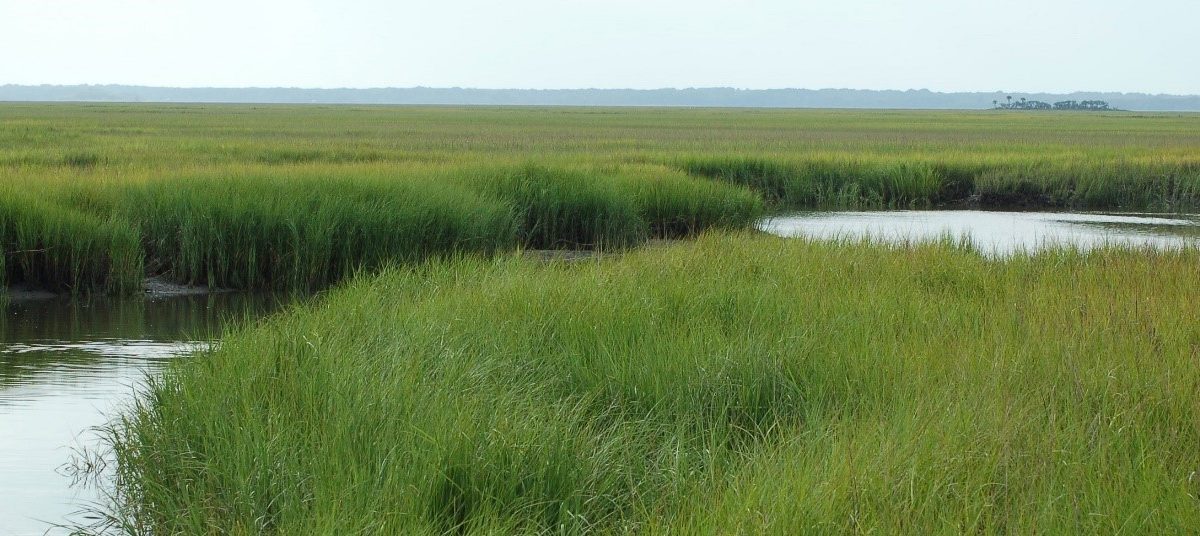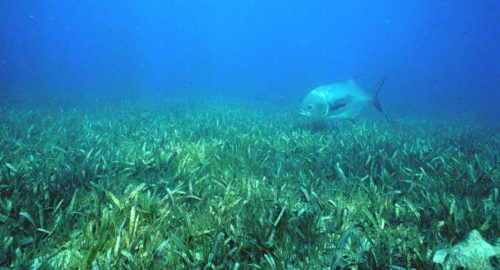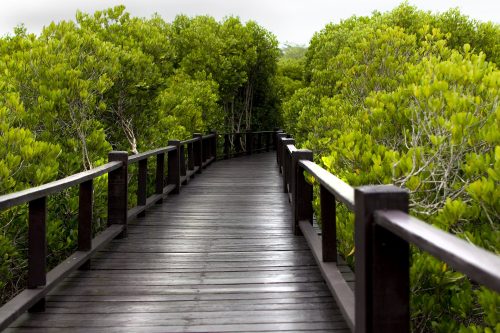Blue Carbon: Environmental Saviour from the Depths of the Sea

Photo Credit : saltmarshguide
The blue carbon ecosystem is a system where mechanisms capture and store carbon, known as carbon sequestration, by marine and coastal ecosystems. This carbon is captured and stored by living organisms in the ocean, deposited as biomass and sedimentation in mangrove ecosystems, coastal saltwater tidal ecosystems, seagrass ecosystems, and potential algal organisms. Blue carbon represents the presence of carbon within marine and aquatic ecosystems, distinct from the carbon present in ecosystems we commonly known, such as forests. Despite covering only about 0.5% of the ocean floor's surface, these plant habitats or vegetation in marine ecosystems account for over 50% and can even reach up to 70% of the entire carbon storage found in ocean floor surface deposits (Nelleman, 2009).
The term 'blue carbon ecosystem' specifically refers to three types of coastal vegetation habitats: mangroves, salt marshes, or tidal areas in saline waters, and seagrass beds, along with the overall role of these ecosystem types in the global carbon cycle.

Photo Credit : Nature and Science/Alamy Stock Photo
From the perspective of blue carbon, these three ecosystem types have distinguishing features, primarily their high carbon content buried within them. They possess the advantage of containing up to 40 times more carbon than terrestrial ecosystems (Mcleod, 2010).
Coastal environments play a significant role in saving humanity and the Earth from the worsening impacts of climate change. Climate change, triggered by greenhouse gas effects or increased CO2 and other gases, results in the trapping of solar heat in the Earth's atmosphere. This leads to the melting of polar ice, damage to ecosystems due to fires and droughts, and a rise in sea levels, causing land to submerge. These greenhouse effects can be highly detrimental and dangerous if not addressed promptly.
Preserving coastal ecosystems, including mangrove forests, tidal areas, seagrass beds, peatlands, and saline marshes, can provide benefits such as preventing erosion, protecting homes during tides, storms, and floods, capturing pollutants often present in air and water, and serving as habitats for specialized coastal organisms. Additionally, coastal area management can become an attractive and potentially lucrative tourist destination.
Blue Carbon plays a crucial role in mitigating the risks of ongoing climate change. This is because blue carbon can store a significant amount of carbon in the soil and bury atmospheric carbon ten times more effectively than terrestrial ecosystems.
Why is mangrove called Blue Carbon?
It is called 'blue' because it forms underwater. These ecosystems can effectively store a substantial amount of carbon within them. Among them, mangrove forests can store three times more carbon per hectare.
In Indonesia, blue carbon is present in coastal ecosystems such as mangrove forests, tidal areas, seagrass beds, and peatlands along the coast. Mangrove forests are a crucial coastal ecosystem for absorbing CO2 from the atmosphere, storing it, and converting it into biomass. Furthermore, the blue carbon ecosystem can be utilized by coastal communities as an economic resource by providing ecological services.

Photo Credit : 1CzPhoto/Pixabay
Benefits of Preserving Blue Carbon
The benefits of blue carbon can be understood in the context that all human activities generate residues, directly or indirectly. All living organisms, including humans, animals, and plants, naturally produce carbon, which is then naturally absorbed by plants and animals. However, the blue carbon ecosystem is the most effective carbon absorber compared to other ecosystems. Preserving the blue carbon ecosystem is the best natural solution for climate change mitigation.
Threats to Blue Carbon
Unfortunately, the coastal ecosystems that serve as Blue Carbon reservoirs are under threat. Deforestation, land-use changes, and climate change have led to the destruction and loss of these ecosystems. When these ecosystems are damaged or lost, the carbon stored for years is released back into the atmosphere, worsening climate change.

